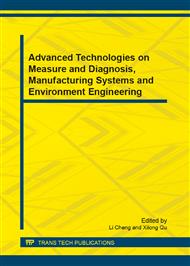p.382
p.387
p.392
p.397
p.401
p.406
p.411
p.416
p.421
Experimental Research on the Laser Scattering Properties of Smoke Particles
Abstract:
With the purpose of accurately and reliably making a forecast on fire, it is necessary to study the scattering properties of the early smoke particles. Based on the laser scattering principle of smoke particles, a device is designed in combination with aspiration system, semiconductor laser of different wavelength and spectral photoelectric receiving tube as well as the flexible structure and signal processing methods, so as to implement the function of acquiring the laser scattering intensity data of smoke particles from multiple angles. In this paper, through a comparative analysis, the basic data related to the smoke particle detection algorithms is obtained.
Info:
Periodical:
Pages:
401-405
Citation:
Online since:
June 2013
Authors:
Keywords:
Price:
Сopyright:
© 2013 Trans Tech Publications Ltd. All Rights Reserved
Share:
Citation:


